May 7, 2019
Standing at my basement office desk, I reached for my phone and texted my friend David, who was upstairs at the kitchen table.
“Dude, come downstairs if you want to see my morning writing routine.”
Within a minute, David appeared at the open door to the office and immediately stepped back in shock, nearly dropping the french press in his hand.
“What the hell?”
I flashed a sheepish grin. I was butt-ass naked in front of my computer keyboard, legs spread wide next to a giant panel of infrared light bulbs that stimulate growth hormone, collagen production and (hence the nakedness) testosterone and sperm cell production in the testes. A long tube in front of my face, attached to a nasal cannula, was blasting my respiratory system with oxidized water for DNA repair. Perched atop my skull with another tube going into my right nostril was a set of photobiomodulation headgear designed to enhance blood flow to the brain while reducing inflammation and fixing neural cells.
Beneath my feet was a balance-challenging Kybun mat patterned after the rice paddy fields in Korea, and attached to both knees were two tiny electrodes to stimulate my muscles as I worked in a standing position – keeping the legs light and free of unsightly varicose veins.
David, one of my clients and a guest at my home for the weekend, raised an eyebrow. I continued to grin. “Nothing you haven’t seen before, right man?” In this case, I was likely wrong.
Admittedly, as a guinea pig, self-experimenting, immersive journalist and supremely curious adventure-seeker, I realize that my own morning writing routine may seem a bit elaborate. But when it comes to sculpting my mind and body into the ultimate human machine, I certainly have times in my life when I also keep things extremely simple, such as a morning sunshine “box breathing” walk, an afternoon of baling hay for the goats, or a collection of fitness tools a bit more simplistic than simply shining laser lights on my balls, and an electrical stimulator to my skull. This article will give you the ultimate blend of ancestral wisdom and modern science to transform your body into a tool that accomplishes any feat you desire.
The fact is, from family reunions to road trips to long airplane rides and beyond, you can drop me just about anywhere on the face of the planet, and I’ll figure out a way to not just maintain muscle, but also build muscle and burn fat – all while developing power, strength, stamina, and balance. In this article, the first of a 2 part series on some of the top gear and tools I weave into my own routine (today is the beginner stuff, then I'll move on to the more intermediate and advanced tools and toys in the next article), I'm going to give you information on some handy devices I think can vastly enhance any exercise protocol.
Why Exercise Anyways
Now, before jumping into some of my favorite ways to “biohack your body”, I think it's important to address the question of why one would do all these in the first place. After all, exercise – at least the way most modern gym junkies think of exercise – is not a prevailing characteristic of any of the Blue Zones of longevity. Despite the prevalence of lean, muscular, strong, and fit populations in not just the Blue Zones, but also hunter-gatherer tribes, many indigenous populations, and our ancestors, there’s little evidence of Crossfit boxes, Planet Fitness clubs, fancy health spas, or kettlebell classes.
In fact, the need to go “hit the gym” is largely a fabrication of a post-industrial society in which engines and computers now do much of the manual labor for us, and we humans are now expected to be at a desk or in a largely sedentary environment for eight or more hours each day.
The unfortunate consequence of this is that the manual labor our bodies are designed to do no longer needs to get done, and we don’t get the all-day-long movement our bodies crave.
To scratch our ancestral itch to move, it only makes sense that at the beginning or end of the day, we’d have a deep-rooted desire to go lace up our running shoes or lift heavy stuff at the gym. Unless we’re going out of our way to hack our environment with treadmill workstations, Pomodoro breaks for movement, and brief exercise forays throughout the day, most of us simply don’t experience the same natural nudge into movement that the Blue Zones have as they collect water from springs, till the fields, walk everywhere, weed the garden, push wheelbarrows, lift rocks, build fences, hunt, and fish. In my article “12 Basic, Natural & Easy Habits To Enhance Longevity” I go over more Blue Zone-inspired tips for enhancing longevity.
Heck, I remember when I was a painter in college and was up and down ladders the entire day, power-washing walls, hauling heavy paint buckets and brushing until my shoulders were sore. The last thing I felt like doing at the end of the day was dumbbell curls in front of a mirror at some gym.
So it’s only natural that unless you’re a construction worker, farmer, gardener, trail builder, or someone else lucky enough to have a relatively physically active job, you’re going to want to insert formal, planned exercise sessions into your week. It’s also natural that in our relatively coddled, overprotected, safe lives, you’ll also experience an urge to go climb a mountain or “slay a dragon,” whether those mountains and dragons be a marathon, triathlon, obstacle course race, fitness competition, sporting event or some other physical challenge.
Just don’t fool yourself into thinking that it’s necessary or natural for optimal health for you to be working on your bench press or training for a marathon, because it isn’t. In an ideal scenario, you’d instead be moving all day long at a low intensity, lifting heavy things, sprinting occasionally, perhaps engaging in a longer stamina-challenging effort once every one to two weeks, and not crushing yourself at the gym for 45-60 minutes a day, then staying sedentary the rest of the day. But if your personal Mt. Everest involves competing in a triathlon, doing a Spartan, performing in Crossfit competition, getting on stage for a figure or bodybuilding show, or anything else that may be “non-ancestral” but makes you happy, you definitely are going to need to hit the gym for some formal exercise sessions and weave in a few of the tactics within this article.
Ultimately, the gym-based exercise that was once the realm of gymnasts, warriors, bodybuilders, and athletes has now trickled down to the general population, but in a sedentary society, when it comes to health outcomes, I still feel that the pros generally outweigh the cons.
The Basics
Let’s begin with the simple and easy-to-use tools that are indispensable to have in your suitcase, car, home office, park, basement, backyard, or anywhere else a “pop-up gym” or minimalist exercise approach is required, including the best choices, workouts, and how-tos.
– Kettlebell – One of the best ways to achieve a minimum effective dose of exercise is to toss around a kettlebell. As a matter of fact, a recent study showed that the acute hormonal response to the kettlebell swing exercise (one of the most popular and easy-to-learn kettlebell moves) consisted of an extremely significant rise in growth hormone and testosterone. A kettlebell is a cast iron weight that looks like a cannonball with a handle.
Originally a tool used by Russian strongmen for training and competition, multi-colored, vinyl-coated kettlebells are now becoming a popular fitness device that you can find at many gyms.
Kettlebell sizes range from 4 pounds to 175 pounds, but because a kettlebell is shaped differently than a dumbbell, a 4-pound kettlebell can actually feel a bit heavy or awkward. This is because the kettlebell’s center of mass is extended farther out from your body, so it can be tougher to handle and maneuver – which is one reason why kettlebells can be so effective at improving your strength, balance, and explosiveness. In most situations, kettlebells are used for increasing grip strength, or for performing specific movements that are designed to build strength and endurance in the lower back, legs, and shoulders. These movements include full-body exercises like the swing, snatch, and the clean and jerk.
I personally own nearly a dozen kettlebells – mainly from Kettlebell Kings and Onnit, as they make some of the most badass, high-quality kettlebells out there – littered across my garage, office and home gym, and nearly every functional weight training workout I perform uses at least one kettlebell move. Should you want to truly take your kettlebell skills to the next level, I highly recommend any of the RKC courses offered by Dragon Door and my podcast with Cal Poly strength and conditioning coach Chris Holder.
– Jump rope – While many fitness enthusiasts prefer a speed-rope-style jump rope, I’m actually a bigger fan of a weighted jump rope because it does a better job strengthening the grip and shoulders. When space is limited, you don’t have access to a treadmill or good running terrain, or you’re doing quick, fast intervals that make it inconvenient to step outside to run or fire up a treadmill, a jump rope is a perfect option. Sure, you could run in place as an alternative, but the coordination requirements of a jump rope offer a bit of a better challenge for your brain.
In addition, if you have any type of injury that leaves you unable to unilaterally load one side, as you would when running or jumping rope with alternate legs, jumping rope with both legs is often pain-free, and can still train your knees, ankles and lower leg tendons for the eccentric motion of running.
For an added challenge, you can purchase a short “battle rope,” tie an elastic band around your ankles and do jump rope intervals. This is actually a well-known obstacle challenge in most Spartan stadium races. Incidentally, Muay Thai fighters, some of the most conditioned athletes in the world, utilize a jump rope as a major part of their training due to the combined full body workout and endurance components.
– Weighted Backpack – On most hunting and hiking websites, you can find rugged backpacks designed for packing meat from large animals out of the mountains, or designed for many miles of hardcore rucking with heavy amounts of weight. These same packs can be filled with sandbags, kettlebells, rocks and used for hiking, uphill treadmill walks, or long rucks through the neighborhood.
When my boys were young, I’d take them on hikes, with my “handicap” being 80-100 pounds stuffed into my Kifaru Timberline backpack, which sports a biomechanically friendly carbon frame and holds 7800 cubic inches. I first discovered the muscle, cardio and grit-training benefits of rucking when I was training for the SEALFit Kokoro, and I still use it as a strategy to amp up the intensity of my walks.
Finally, for his hunt training, my friend Joe Rogan uses and recommends the Atlas Trainer, which is a special type of weighted backpack with an attachment option for a standard weight plate.
– Weighted Vest – A weighted vest is simply a vest that is either made from a heavy material, or equipped with small pockets that can be filled with tiny sandbags, small steel bars, or other weighted objects. The purpose of a weighted vest is to add extra weight for body-weight exercises, walking, distance running or speed, agility, and quickness drills.
When it comes to performance, research has shown that using this type of extra load during sprinting or speedwork requires your lower-body muscles to generate more force against the ground and can lead to improvements in strength, power, and acceleration during running, as well as increased strength and efficiency during speed, power, and agility drills. It’s simple to turn a bodyweight workout into a difficult routine by simply putting on a weighted vest.
For example, here’s one treadmill routine that I do while wearing my weighted vest:
- 2-minute treadmill run (bicycling in a standing position is another option)
- 20 weighted vest push-ups
- 20 weighted vest squats
- 20 weighted vest “get-ups” (simply lie on your back on the ground, then do a sit-up motion and stand up to your feet)
- 20 weighted vest reverse lunges
Repeat these five stations as a circuit 4-6 times through. Because you’ll be running, this routine works best with a 10-20-pound vest, and if you want an even more advanced version, throw in a round of pull-ups too.
You can also wear a weighted vest during hikes, walks around the neighborhood, at the park, or even when doing stair repeats in a stadium or at a hotel. The sky’s the limit (I’ve even worn my vest through airport security and walked around airports with it on!). The useful part about a weighted vest is that no matter where or how you move, it’s going to make any aspect of getting from point A to point B just a little bit more difficult. You can add an intense twist to just about any weight training routine by putting on a weighted vest.
For example, you can try a “5×5” routine, while wearing a vest. This routine – which involves five sets of five deadlifts, squats, bench presses, barbell rows, and barbell cleans – gets seriously amplified when it’s performed wearing a weighted vest. The main thing you’ll notice is that your core, low back, inspiratory, and expiratory muscles are forced to work far harder at the same time as all the other muscles you’re working, which gives you an added calorie burn and challenges your small postural and core muscles.
– Medicine Ball – The medicine ball is a simple and versatile way to weave powerful, explosive activities into your exercise routine. Take the example of a medicine ball cannonball toss, in which you drop into a deep squat position with both hands wrapped around the ball, then explode up and toss the ball as high into the air as possible. If you are focusing on the height the ball reaches (if you are trying to hit the ceiling), you are suddenly forced into producing maximum acceleration, full-body extension, and power, with no risk of injury from the eccentric lowering of the weight.
The same can be said for some of my other favorite medicine ball exercises, including medicine ball side tosses, medicine ball overhead throws, medicine ball slams, and the classic power squat-to-press move: the medicine ball thruster. If you add a 10, 20, 30 and 40 pound medicine ball to your fitness arsenal, the range of power development, coordination and functional fitness exercises you can perform is nearly limitless, and if you’re training for any type of sport, the addition of medicine ball exercises to your routine is a no-brainer. I’m a fan of the durable, vintage leather medicine balls made by companies such as Champion Sports and Rogue Fitness.
– Stability Ball – Also known as the Swiss ball, the giant exercise stability ball seems to have been bastardized of late as a “core-activating chair” for use at a desk. I don’t recommend this. Hunched forward shoulders and a collapsed spine notoriously accompany the use of a ball for a seated position, and you must be hyperaware of your posture if you are opting to use a stability ball as something to sit in. But a stability ball does have a host of beneficial uses.
Functional movement guru Paul Chek is a huge fan of the ball, and when he began showing up at Gold’s Gym in San Diego, the bodybuilders would stand around and make jokes about how ridiculous he looked. But they were quite impressed when Paul began performing deep squats on the ball, crunches on the ball with 180-pound dumbbells and chest-pressing 110-pound dumbbells while laying on the ball.
There are a few reasons the stability ball is beneficial to add to your exercise gear. When properly inflated, it provides a firm but wobbly surface that requires you to react quickly to every tiny movement of the ball caused by a change in your center of gravity. This results in the activation of core and planted leg or arm muscles as stabilizers. At the same time, your body’s proprioceptive mechanisms, such as joint mechanoreceptors, spindle cells, your inner ear, and your ocular proprioception must all stay active, which can train increases in your sensory perception and spatial awareness. Because of its shape, the ball is also excellent as a stretching tool for the abdominals and spine.
So what do you do if you’re not going to sit on the ball while hunched over a keyboard? For starters, try the supine lateral ball roll, an exercise that allows the development of the spinal stabilizers, the foot and ankle complex, hip, pelvis, shoulder girdle, and neck. This is what Paul Chek calls a Big Bang exercise because it conditions the body in all planes of motion at once, and activates all the weak muscles responsible for stabilizing all body segments involved with the exercise.
– Training Mask – Although it is often scoffed at as a gimmicky marketing tactic that makes one look like the villain Bane from Batman, the Training Mask actually does work to increase fitness dramatically, but not the way most people think. These masks do not simulate altitude, nor do they actually change the atmospheric pressure you’re training in. You need a far more expensive oxygen-scrubbing device designed for intermittent hypoxic training (IHT) or exercise with oxygen therapy (EWOT) in order to truly simulate altitude or to increase or decrease the partial pressure of the oxygen in the air you’re breathing.
So when you’re charging down the treadmill sporting your scary-looking altitude-training mask, you’re still breathing air that is approximately 21 percent oxygen, with the same partial oxygen pressure of whatever altitude you happen to be at.
But these masks do make it harder to breathe and also build up high amounts of carbon dioxide in the air that collects in the space of the mask directly in front of your mouth. So these masks can certainly be effective for improving ventilatory capacity and for increasing your mental tolerance and stress resilience in situations, including in situations where you have low oxygen or air availability, but they don’t achieve the same physiological adaptations as true hypoxic training.
These masks have even been studied, particularly with respect to their effect on respiratory compensation threshold (RCT). RCT is basically defined as the boundary between high-intensity activity and much higher intensity exertion at which you begin to breathe hard and lactic acid begins to accumulate. Under normal conditions, your body’s drive to breathe is based on blood carbon dioxide levels in the blood. But when RCT is reached, a significant portion of bodies drive to breathe is driven by accumulating lactic acid levels. This results in heavier respiration, inspiratory and expiratory muscle fatigue, an overall inability of the body to be able to sustain high-intensity exercise. In studies, Training Mask acts by increasing RCT, allowing for the ability to sustain exercise intensity for a longer period of time prior to fatigue.
One of my preferred ways to use the Training Mask is via a simulation of the “high-oxygen to low-oxygen” environment you’d experience with a spendier EWOT device. Specifically, I’ll use a bicycle or treadmill, warm-up with the Training Mask off and hung around my neck, then pull it over my face and sprint for 30-60 seconds, then pull the mask back down and recover for 30-60 seconds, for 10 rounds. On the TrainingMask website, you can find plenty more protocols, including some good diaphragmatic training sessions that you can do while simply resting on your back in a sauna or your living room.
– PowerLung – Like the Training Mask, the PowerLung is a small, handheld resistant training device for the lungs, not an altitude simulator. But just like any other muscle in your body, the best way to build fitness in your diaphragm, inspiratory and expiratory muscles is to train them.
I’m often asked why one wouldn’t just save some money and breathe through a straw to create this effect. It comes down the concept of threshold resistance: when you breathe in and out through PowerLung, you are working against a threshold of resistance that is the same for every breath. You are not breathing through a restricted orifice where the load can be reduced just by changing the way you breathe.
The PowerLung has two control dials, one designed to train your inhale breathing and the other designed to train your exhale breathing. Both are adjustable to set your level (threshold) of resistance, exactly like how a person adds resistance with weights for strength training. A sample training session you can do with the PowerLung is to simply inhale and exhale through the PowerLung (that’s one repetition) for a count of 10 seconds, then to repeat for 10 rounds. While I’m certain the manufactures of the device would not encourage this, I tend to do my PowerLung training while driving or stuck in traffic. I find myself in that type of scenario three to four times a month easily, so I literally get over forty resistance lung training sessions a year with that approach.
– Relaxator – The Relaxator is a small no-frills device that you can hang around your neck like a necklace. You can then place the mouthpiece in your mouth and, when you exhale, experience an adjustable level of resistance to mouth-based exhalation, while simultaneously being able to breathe through your nose as you normally would. This helps you maintain elevated levels of oxygen and carbon dioxide simultaneously.
In addition to making your breathing more rhythmical, slow and relaxed, the Relaxator also stimulates your diaphragm to work more efficiently, thereby ensuring that the air you inhale reaches the lower part of your lungs. Because you’re forced to have a lower respiratory rate while using it, it also activates the parasympathetic nervous system, which comes in handy if you decide to use it while, say, checking emails or stuck in traffic. You can also use it while cooking, mowing the lawn, cleaning the garage, or during any other activity for which you don’t want to look like a freak with a Training Mask on, but want a more subtle way to train your breath.
– Hand Grip Trainer – I cannot recommend highly enough that you add a high-quality hand grip trainer, such as the aircraft-grade aluminum “Captains Of Crush” devices to your briefcase, book bag or car glove compartment. Between a Captains Of Crush and a PowerLung in my car or bookbag, I can train my lung and my grip during any road trip or flight.
My preferred training method with the Captains Of Crush is to squeeze ten times as hard as possible, then hold the last squeeze as long as possible before switching hands and repeat for three rounds. Subjectively, it also seems to have a good stress relieving effect. Read more about the importance of hand grip strength in my article, “Get A Grip: Why Grip Strength Is So Darn Important And 7 Potent Ways To Increase Your Grip Strength.”
– Neuro-Grips – Strongman, author of the training book “Neuro-Mass,” and my former podcast guest Jon Bruney is known for creating body-blitzing workouts with special combinations of super-slow grinds, isometric holds, and explosive repetitions, in that order. Jon calls these Neuro-Sets. When performed with proper intensity and in the correct sequence, Neuro-Sets can put your system into neural overdrive and effectively cause your strength to explode.
A sample of a Neuro-Set for the upper body would be a set of super-slow push-ups, a push-up hold at the bottom of the push-up for as long as possible, then a final set of explosive push-ups to failure. When Jon was seeking a way to intensify exercises like the push-up, he found a suitably primitive device that was up to the challenge—a nail welded to a piece of pipe. Attempting to stabilize the core while performing a push-up with this T-shaped tool proved incredibly challenging. He eventually created the crude device into a durable, heavy-industrial steel set of what he named Neuro-Grips, and published a training manual to accompany the invention.
Normally I can bang out over 60 push-ups without much trouble, but with Neuro-Grips I struggle to perform anything close to 20 reps and can develop a vice-like grip in the process. The portability is a nice feature too.
– Elastic Bands or Tubing – Back in my bodybuilding days, elastic bands were my go-to while on the road, although I’ve since upgraded to fancier elastic band system called the X3 bar. Also, check out my podcast, The Best 10 Minute A Day Workout – How To Massively Increase Bone Density And Muscle In Just 10 Minutes & Biohack Extreme Fitness Levels for more on the X3 bar.
I still often travel with elastic bands for on-the-go workouts, and they’re also a good budget friendly-alternative to a fancier system. Problem is, most folks do “single-joint” movements such as arm curls and side raises with the bands.
I instead recommend full-body moves such as:
You can easily do those five exercises as a circuit.
– Suspension Strap – When a pull-up bar is not to be found, there’s nothing quite like a suspension strap to automatically create a pulling and grip-strengthening station. It’s also a simple, portable method for balance training, lunges, push-ups and a nearly unlimited host of challenging exercises.
You’ll usually find this, elastic bands, slider plates and Kaatsu devices in the giant 60L backpack I travel with (I usually squeeze this all into the overhead airplane compartment and check zero gear). I prefer a relatively minimalist version without all the fancy new elastic and pullies in the newer models. The TRX is a good choice.
– Slider Plates – Another travel-friendly option is slider plates. If you've ever hit the gym, noticed those small discs in the stretching area and wondered what the heck they are, you're not alone. I originally discovered these no-frills training tools when celebrity trainer Valerie Waters introduced me to her “Valslides” version nearly twelve years ago at a fitness conference.
The concept behind these plates is incredibly simple. You place either both feet or both hands on the sliders and slide them around in varying directions, with a similar core workout as you’d experience if you were to wear socks on your feet and paper plates under your hands on a wooden floor.
A few of the best moves include:
- Knee tuck: Start in high plank position with both feet on sliders. Pull knees in to touch the chest. Focus on keeping your core tight, and don't hike hips too high. Push feet back to extend into a high plank. Repeat.
- Mountain climber: Start in high plank position with both feet on sliders. Slide right knee forward to the chest. Push knee back to return to high plank. Repeat on the other side.
- Skater: Stand with both feet on sliders. Slide your left foot behind the right as far as possible, while bending the right leg and reaching the fingertips of the right hand to touch the floor. Pull the left foot back as you return to standing position. Repeat on the other side.
- Reaching reverse lunge: Start in a seated position with knees bent, hands on the ground with fingertips facing forward, and both feet on sliders. Lift your hips until knees form a 90-degree angle, arms are straight, and hips are level, like a tabletop. From here, flex the right ankle so only the right heel rests on a slider. Send right foot forward, engaging your glutes and hamstrings, then pull back to tabletop. Lower right foot and flex left ankle. Then send the left foot forward, and pull back. Repeat.
- Alligator walks: Get into a push-up position with the sliders under each foot and walk your hands across the room while keeping your stomach and back tight. For the strong of core and those willing for an added challenge, you can do this same move with a 25-, 35- or 45-pound weight plate.
The slider models I like are the original Valslides, the SKLZ Slidez, and Gliding Discs.
– Rings – There are a set of gymnastics rings hanging above our family’s backyard patio, in the gym, and even above the cold pool (there’s nothing quite like a set of ring muscle-ups followed by dropping into icy-cold water). The unique nature of gymnastic rings, and the exercises that can be performed with them, provide benefits far beyond those of a pull-up bar.
The primary benefit of rings, in addition to their low space requirement and portability, is their inherent instability. Because they independently swing from a long strap, the rings move at the slightest touch, forcing you to concentrate every second that you are holding the rings to keep from swaying and resulting in the use of far more core and stabilizing muscles. Transitioning your body around rings while utilizing a variety of positions requires a surprising amount of upper body strength and control. Just take a look at the average gymnast’s rippling shoulders and biceps to see what I mean.
I recommend using wooden rings. Plastic and metal rings are far more slippery and more difficult to grip properly. The added expense of wood is worth it if you plan on training with the rings for a long time. Both Onnit and Rogue Fitness have good models. To get started, simply secure the straps over a bar, through mounted hooks or from playground monkey bars, and you’re set. Once you have your rings, head over to the website gmb.io for some excellent ring training instructions and a host of gymnastics and functional bodyweight ring exercises.
– Blood Flow Restriction (BFR) Straps – These straps can be combined with most of the training tools in this article and are particularly effective when used with suspension straps, kettlebells, any form of isometric training, and all the cardio machines such as the rower and the Air Assault bike (just try a Tabata set with BFR straps on your arms and legs).
– Underwater Audio Player – If you’re anything like me, you can sometimes get a bit bored during a five minute cold shower, an hour-long paddleboard session, or a lap swimming workout at the pool – or at least feel as though the experience could be enhanced with a good podcast, audiobook, or music set.
Problem is, if you simply carry your phone in a waterproof case you A) run a pretty high risk of losing or damaging your phone and B) are distracted or tempted by the fact that your phone is there should you want to check Facebook or shoot off a quick text message as you rest between swim repeats or wait on your surfboard for the next set.
Enter my own personal minimalist, no Wifi, no Bluetooth solution: a waterproofed underwater audio player, much like the old-school iPod shuffles that Apple used to make. There are thousands of refurbished, waterproofed shuffles scattered across the internet and several generic options too.
What About Travel?
So how do I roll when I travel? Here's an example: I recently packed up my wife and twin boys and embarked upon our annual family vacation to the tiny, sleepy Pacific Northwest coastal town of Seaside, Oregon.
In reality, Seaside – a somewhat touristy town with far more arcades, candy stores, and ice cream shops than gyms – wouldn’t be my ideal choice for an active, healthy hotspot destination. But it’s a longstanding tradition in my wife’s family, so I joined in.
Anyway, as I tend to do for road trips, into the back of the car, I threw my kettlebell, my suspension trainer, an elastic band, and a couple of light “sliders” (think tiny plates the size of paper plates that can be used for a host of different exercises).
With no access to a gym or any other workout equipment, but armed with these four simple and easy-to-transport tools and five basic exercises for each tool, every day I was able to perform an enormous variety of exercises, including:
- Suspension Strap
- Elastic Band
- Body Weight
- Burpees
- Jumping Jacks
- Skipping In Place
- Sit-To-Stand
- Plank-To-Pushup
As you can imagine, when completed with little to no rest between sets, this workout simulates exactly what I'd get at a high falootin' health club – all performed in the backyard of a beach house.
Sometimes the tools I use for these objectives are simple – such as the easy-to-use travel “kit” described above – and sometimes these tools are more complex, fringe biohacks that fly under-the-radar (Stay tuned for next week's article to discover some of these.). But from simple to complex, every tactic I’ve discovered to mold the body anytime, has been described in this article, which can now serve as your ultimate guide to biohack and build your body using both common-sense and easy-to-find tools along with underground and little-known methods, each with plenty of highly practical “tips from the trenches.”
Summary
Since most of the items I mentioned will only set you back a few bucks and can easily be ordered on Amazon, you could be getting a killer workout just about anywhere in no time. Stay tuned for part two where I'll discuss some of the fancier, more expensive options that will allow you to create the ultimate body-upgrading environment.
And if you need another reason to stock your home gym arsenal with kettlebells, jump ropes, medicine balls, and beyond, read my article, “The Big Problem With Gyms, Why You Need to Exercise Outdoors & What To Do About Air Pollution.” for a deep dive into the problem with most gyms. Hint: The air is often teeming with concerningly high levels of carcinogens, not to mention the significant amounts of harmful bacteria on the surfaces of fitness equipment such as treadmills and weight training machines.
What about you? What fitness gear do you not leave home without, or what are your go-to travel workouts? Leave your comments, questions, and feedback below, and stay tuned for Part 2, which, admittedly, will be a bit more “biohacky” than this first article!

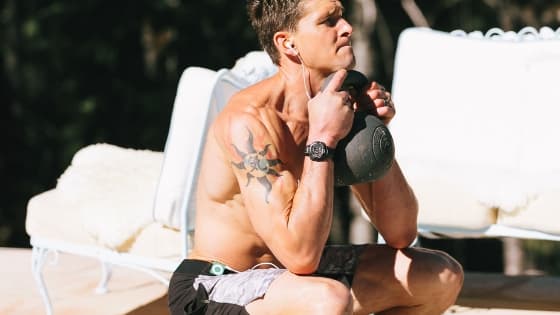

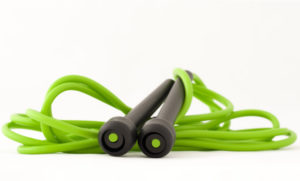
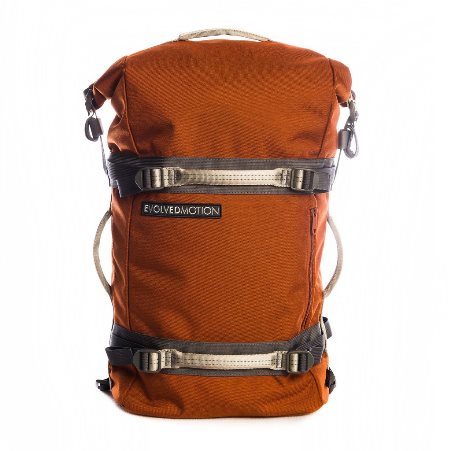
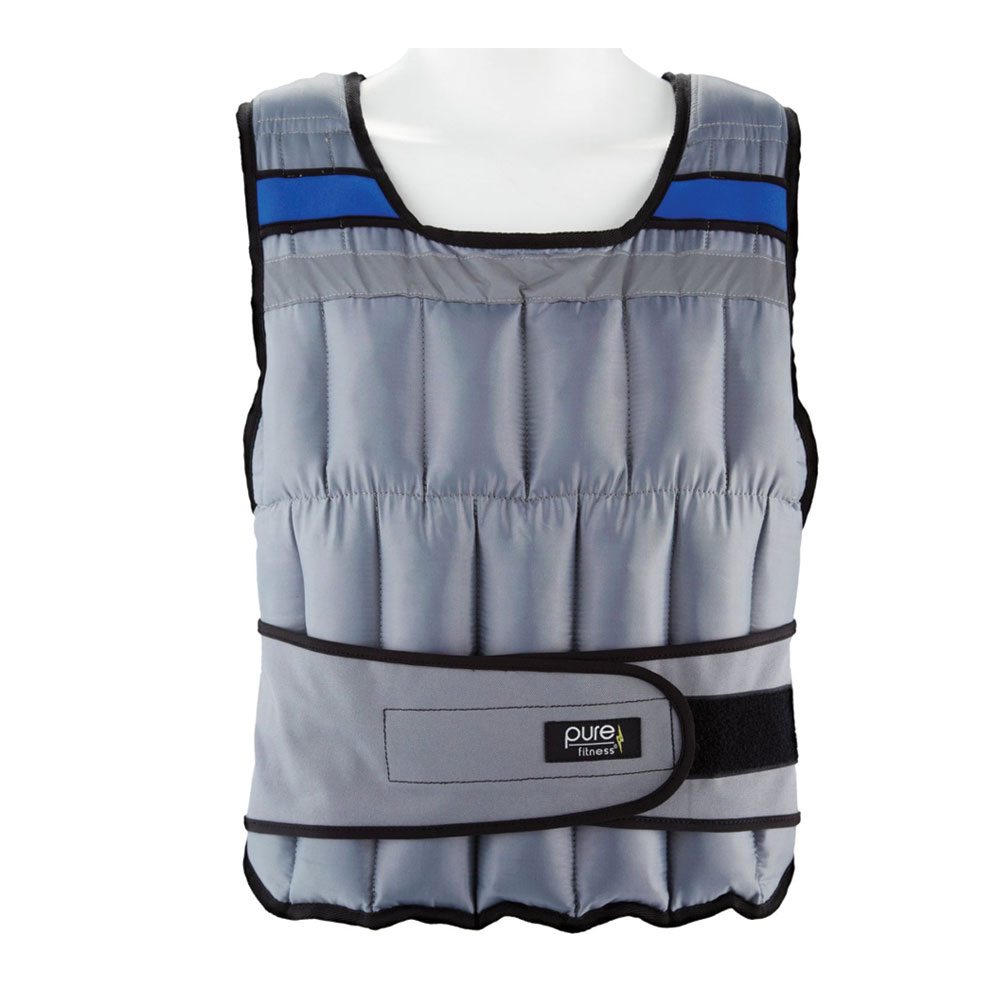
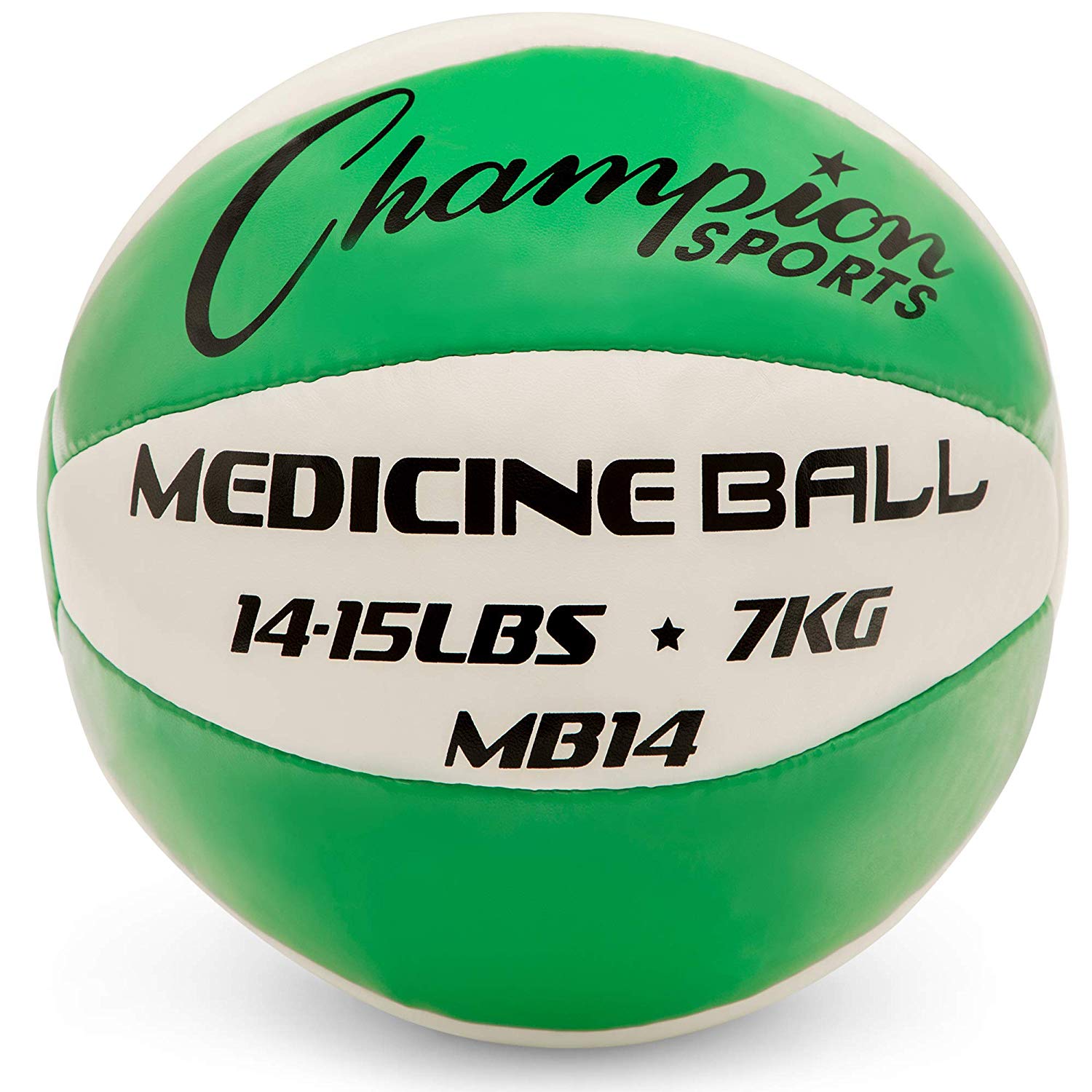
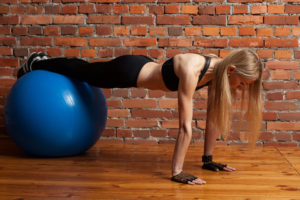

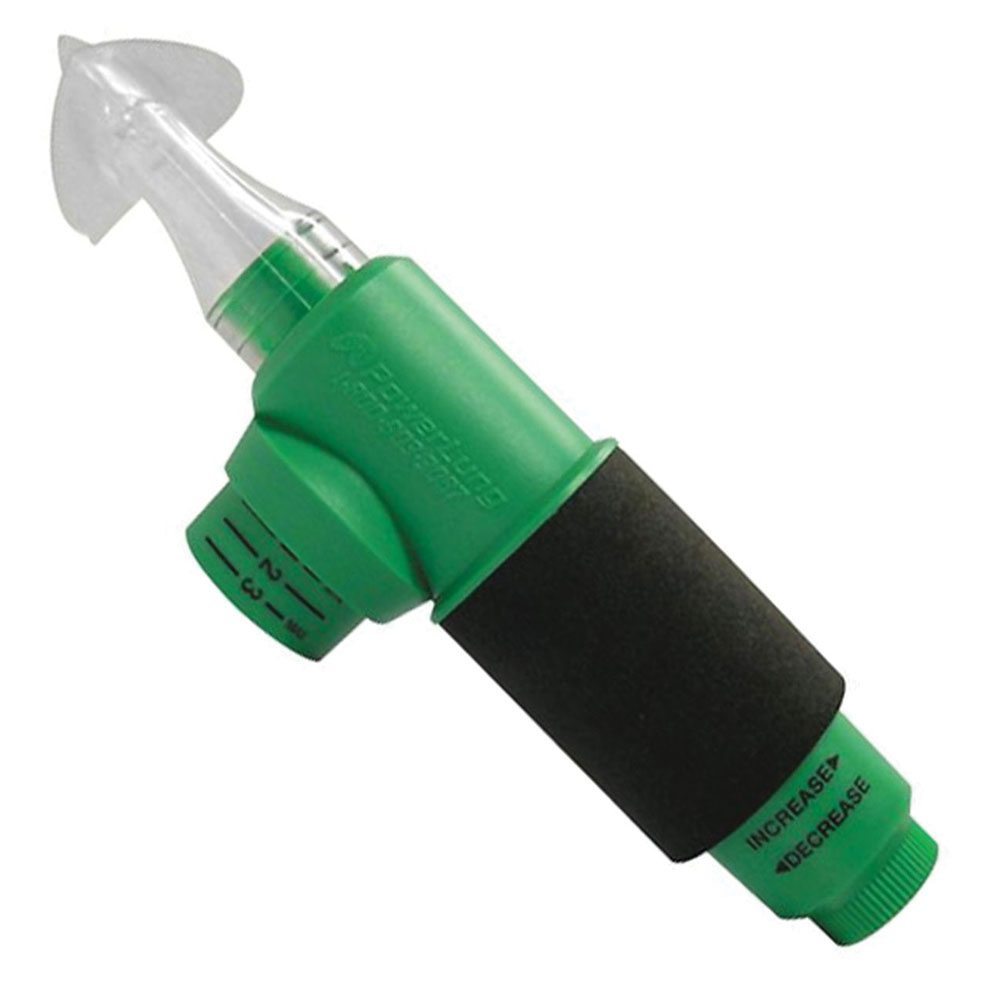
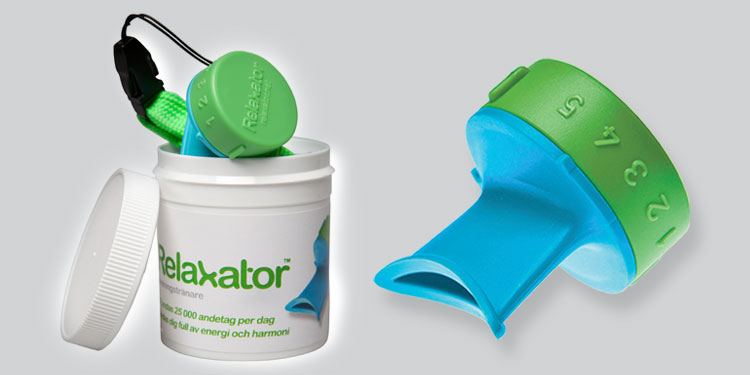
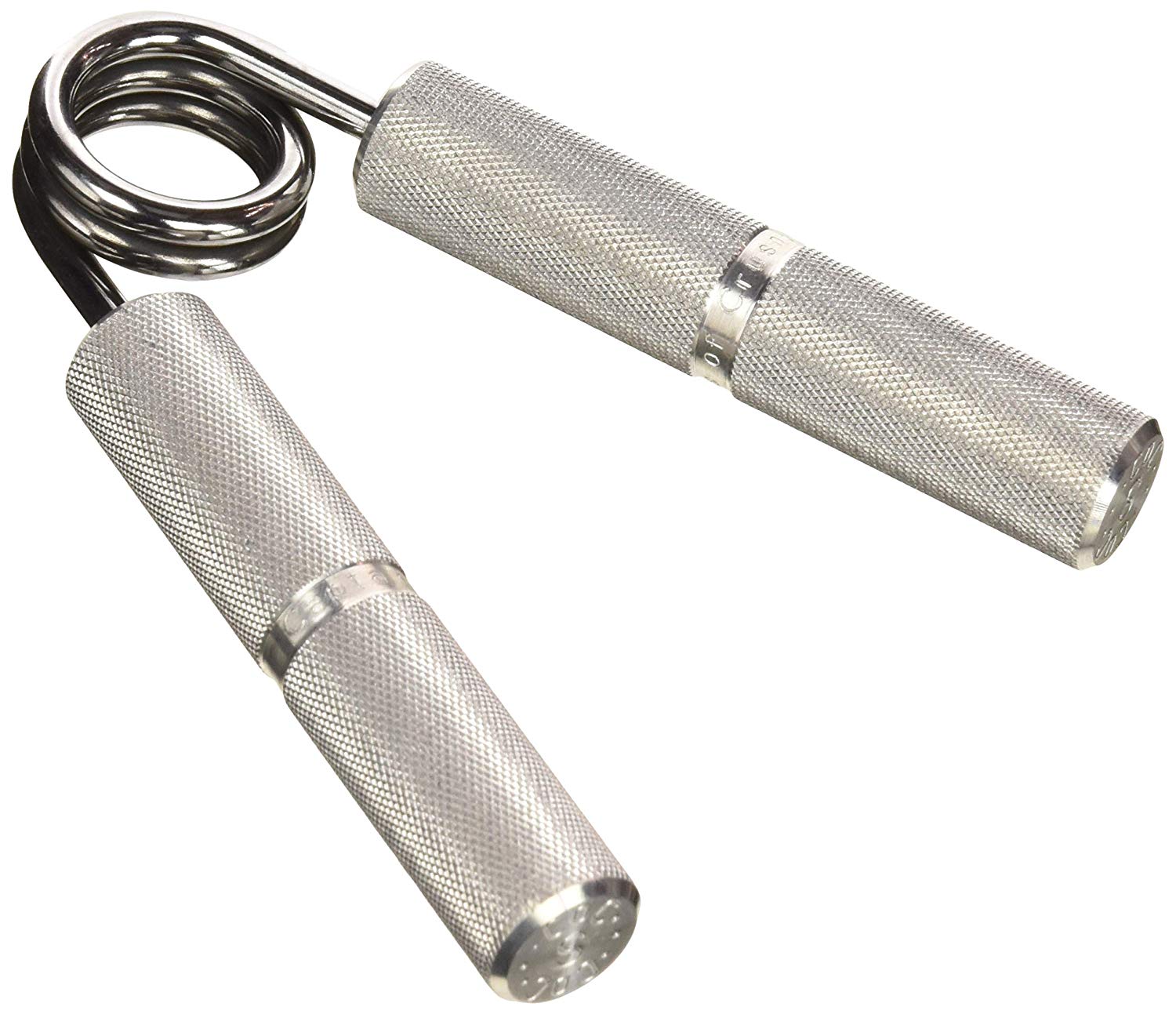
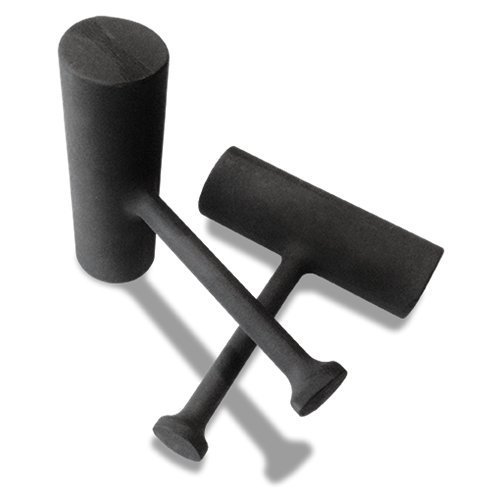



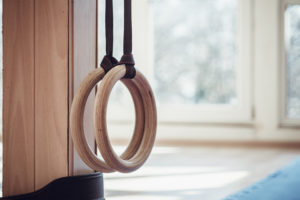
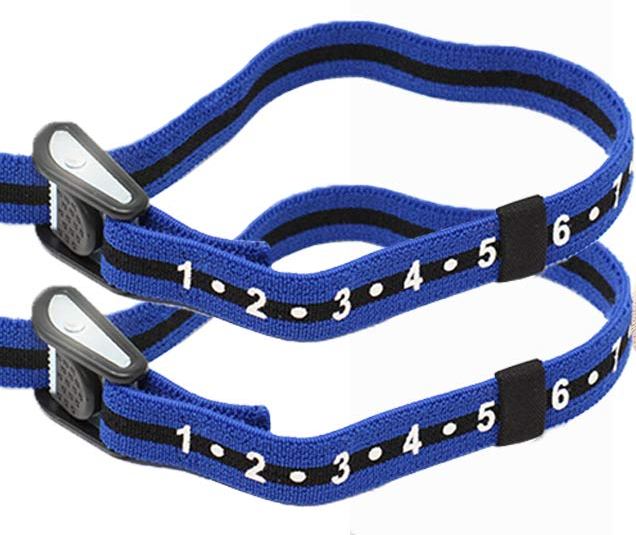
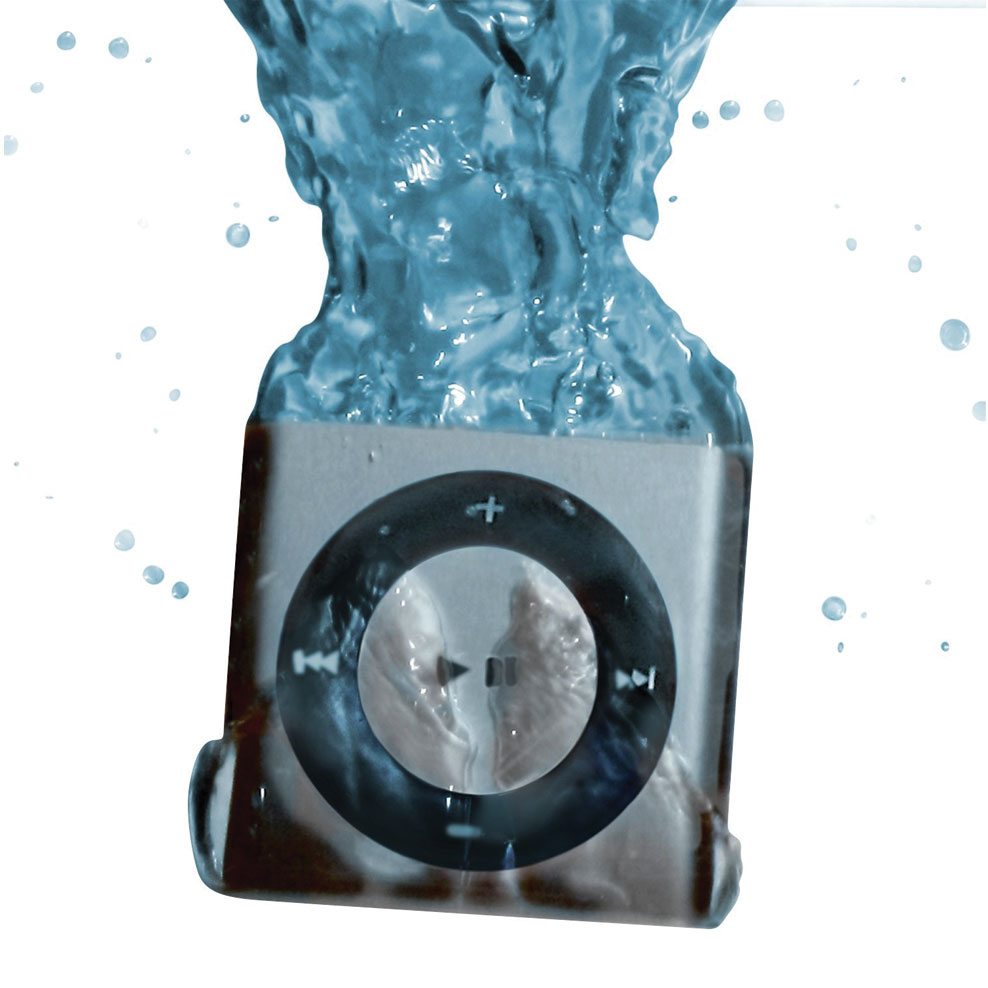



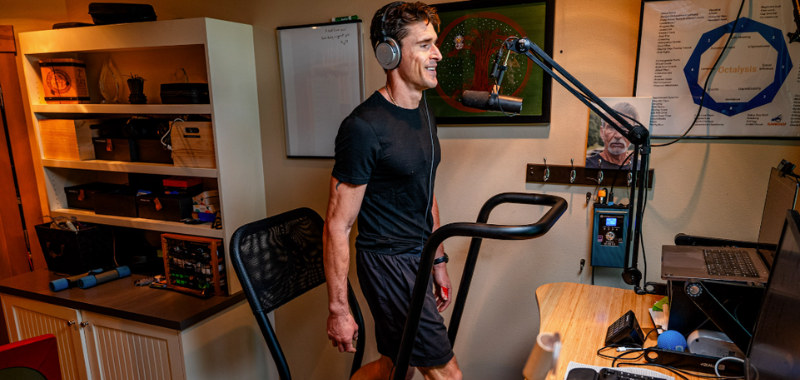








Hello Ben, love your articles, share many with my grown children who are both health fanatics, my daughter Danielle already loves a lot of your stuff. My son Jake who is younger ( 26), still has me set up his workouts, cycle them, keep all his stats since he started at 17. I have been into weights since 1969, pretty much have been a gym rat my whole life. I’m 66 years old now. I have had since 52, several major health issues, 2-Strokes, cancer, C-Diiff which I lost about 90 lbs, beat them all and more, I’m certainly Blessed. I have an Aorta anuerysim on my accending Aorta. have since found in 2017. Life goes on. My lifiting has changed trastically to say the least. I still walk about 8-10,000 steps a day, and go to the gym 3 times a week. Love to work out, but any sets I do are with weight I can lift with 15-20 reps. I still haven’t been able to find anyone who can or will help me to design some good workouts for me. all my doctors are thrilled at what I do, actually pretty amazed, but just cannot find help. My resting hartbeat is 58 ,in the morning, all my test are great, just routines like this I really need help with. Don’t do any compounds, but can do everything else. I’m praying you can help me some way. Thanks
Hey Ben.
I’m wondering whether or not you’re concerned about plastic (and other synthetic material) exposure. For example, using the iPod shuffle (or iPhone on Airplane Mode) with headphones. Does having plastic sticking in your ears and a PVC cord rub against your skin allow the chemicals from plastics (especially lead from PVC) to enter your body?
I think it'd be nearly impossible to go through life without briefly touching plastic/synthetic materials many times a day. (Is the keyboard you're typing on right now plastic?) I'd be more concerned with avoiding plastic when it's touching your food/drink, especially when exposed to heat.
This is the ultimate training pack you can invest in. In my opinion, a pair of resistance bands, a jumping rope and a kettlebell right next to your bed is everything a man needs to be in great shape! Awesome article, Ben. Like always!
Hey Ben,
Older guy here, mid 60’s, but I still exercise even though I lost 1/3 of my lung function via Lyme Disease. I also play music and sing but after a gig, which for me is a massive workout I’m so jacked up that I can’t settle down for hours and sometimes barely get any sleep that night and the effects linger for a day and a half.
Any recommendations to calm the adrenal rush from exercise and playing/singing music?
Thanks,
B
I like to use breathing techniques <a href="http:// (http://bit.ly/2LQSXLr),” target=”_blank”> <a href="http://(http://bit.ly/2LQSXLr),” target=”_blank”>(http://bit.ly/2LQSXLr), CBD ( https://goo.gl/owDhm8), Doc Parsleys Sleep Remedy <a href="http:// (http://bit.ly/2LMFMee),” target=”_blank”> <a href="http://(http://bit.ly/2LMFMee),” target=”_blank”>(http://bit.ly/2LMFMee), binaural beats, cold shower to lower body temp, etc…
Hi Ben! Amazing and valuable article as always. Quick question , you have mentioned fasting in religious cultures such as Islam and Judaism , what kind of foods would you recommend people stick to for Ramadan for example which is fasting from dawn til dusk ? Appreciate the reply in advance .
I recommend posting this to the Kion Community. It’s a completely free online community of like-minded people who both have advice and are seeking advice. Facebook.com/groups/GetKion/
What is your opinion on exercise programs such as P90X and Insanity? Thanks Ben! Love your stuff.
They've been great at getting more people moving and finding creative ways to utilize a more minimalist approach to fitness… Having said that, I don't feel they are right for everyone. The one size fits all approach is a slippery slope and can lead to overtraining and dysfunction/injury if not performed properly.
I play amature soccer and being an older athlete, at 36, need to work on recovery. Looking for tips with getting back to my best!!
Check this out: http://bit.ly/2W2P5dU
Another awesome article Ben…can’t for pt 2! Although you include everything, and more, I often take with me when going mobile, the only other item I always take are a couple bands of varying strengths made by Rogue, Westside Barbell, or Elite Fitness Systems. They are a great companion to the elastic bands with handles, and even just a ‘mini’ band can fit in the palm of your hand and allow you to do band pull-aparts, good mornings, squats, pulldowns, rows, pushdowns, resisted pushups, pull throughs, etc. Another benefit I like of the bands are when traveling I often end up ‘coaching’ somebody at the hotel fitness center…and usually my go-to circuit includes band pull-aparts, which are great for countering the cubicle posture; band squats/good mornings; pushups (adding the band for more resistance); band rows; pushdowns or tri-extensions; and if a chin bar is available the band works great to have them do assisted chins and standing crunches…they are really versatile! Thanks again!
Hi Ben,
would you recommend any Infrared lighting panel that is being sold in EU?
Thank you and good luck with great work you do!
Jan